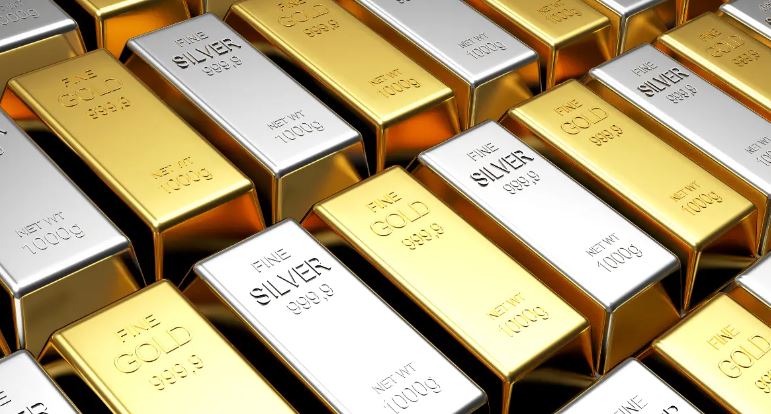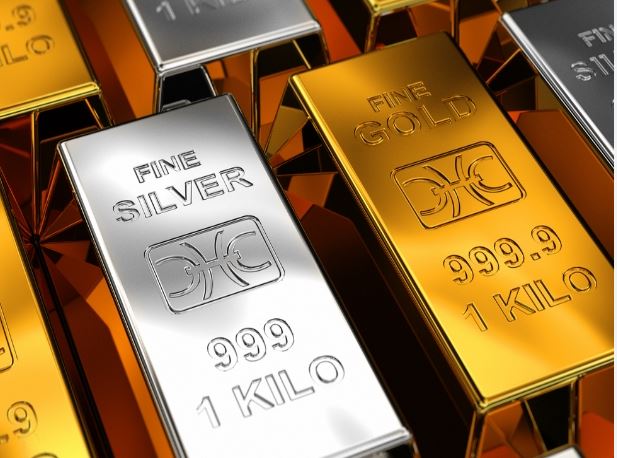Top 5 Reasons To Invest IN Gold & Silver

Investing in physical gold and silver has been a popular strategy for many years. While there are many investment options available, physical gold and silver offer a unique set of benefits that make them an attractive investment option for both novice and experienced investors. In this article, we’ll explore five reasons why you should consider investing in physical gold and silver.
1 – Protection Against Inflation
One of the main reasons people invest in physical gold and silver is to protect their wealth against inflation. Unlike fiat currency, gold and silver have intrinsic value and are not subject to inflationary pressures. As a result, owning physical gold and silver can act as a hedge against inflation and help maintain your purchasing power.
2 – Diversification of Portfolio
Diversification is key to any successful investment strategy, and physical gold and silver offer a way to diversify your portfolio. Gold and silver prices tend to be negatively correlated with other asset classes, such as stocks and bonds. As a result, investing in physical gold and silver can help reduce your overall portfolio risk and improve your overall returns.
3 – Preservation of Wealth
Gold and silver have been valued for thousands of years and have proven to be a reliable store of value. Unlike stocks or bonds, gold and silver are not subject to counterparty risk and cannot be defaulted on. This makes them an excellent choice for long-term wealth preservation.
4 – Global Acceptance
Physical gold and silver are recognized and accepted as a store of value around the world. This makes them a highly liquid asset that can be easily traded or sold in any country. Additionally, unlike fiat currency, gold and silver are not subject to government manipulation, making them a safe and reliable investment option.
5 – Tangible Asset
Physical gold and silver are tangible assets that you can hold in your hand. This provides a sense of security and peace of mind that other investments may not offer. Additionally, owning physical gold and silver allows you to bypass intermediaries and have complete control over your investment.
Conclusion
Investing in physical gold and silver offers a range of benefits, including protection against inflation, diversification of portfolio, preservation of wealth, global acceptance, and tangibility. While gold and silver prices can be volatile, they have proven to be reliable long-term investments. As with any investment, it’s important to do your due diligence and consult with a financial advisor to determine if investing in physical gold and silver is right for you. However, for those looking to diversify their portfolio and protect their wealth, physical gold and silver can be an excellent investment option.
History Of Gold & Silver Precious metals
Precious metals have been traded for thousands of years, with gold being the most sought-after metal due to its rarity, durability, and malleability. The history of precious metal trading dates back to ancient civilizations, and it has played a significant role in shaping the global economy.
Ancient Times
The use of gold as a form of currency can be traced back to 600 BC when the Lydians in Asia Minor began minting gold coins. The coins quickly gained popularity as a form of payment and were used in trade throughout the Mediterranean. The Greeks and Romans also used gold coins for trade, and gold soon became the standard for international payments.
During the Middle Ages, gold and silver were used for coinage and trade in Europe, and the precious metals were also used as a store of wealth by monarchs and nobles.
Modern Era
The modern era of precious metal trading began in the late 19th century with the establishment of the gold standard, where currencies were pegged to the value of gold. The gold standard helped to stabilize international currencies and facilitated global trade.
The 20th century saw the rise of futures contracts and exchanges, which enabled investors to trade precious metals without taking physical delivery. In the United States, the Chicago Mercantile Exchange was established in 1898, and in 1933, President Franklin Roosevelt signed the Gold Reserve Act, which prohibited private ownership of gold and made it illegal for individuals to hoard gold coins or bullion.
In 1971, the US government ended the gold standard, and since then, the value of currencies has been determined by market forces, with gold and other precious metals serving as a hedge against inflation and economic uncertainty.
Today
Today, precious metal trading has evolved into a global industry, with traders and investors around the world buying and selling gold, silver, platinum, and palladium. The London Bullion Market Association (LBMA) and the Shanghai Gold Exchange (SGE) are the largest global marketplaces for trading gold, while the New York Mercantile Exchange (NYMEX) and the Chicago Mercantile Exchange (CME) are the largest futures exchanges for trading precious metals.
In recent years, the rise of digital currencies such as Bitcoin has sparked debate about the role of precious metals in the global economy. However, many investors still view precious metals as a safe and reliable investment option that can help to protect against economic uncertainty and inflation.
Conclusion
The history of precious metal trading is long and rich, and it has played a significant role in shaping the global economy. From ancient civilizations to modern-day futures markets, precious metals have been used as a store of wealth, a form of payment, and a hedge against economic uncertainty. As the world continues to evolve, precious metal trading will likely continue to play a vital role in the global economy for years to come.
Checkout Apmex If you are looking for a company you can trust when it comes to buying gold they set the gold standard in our opnion. Be sure to check out our post next week on some silver we recently purchased from Apmex should be exciting. https://www.apmex.com/
